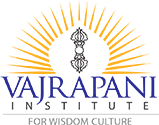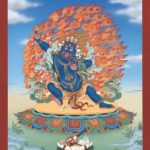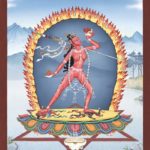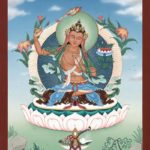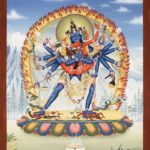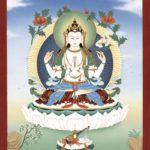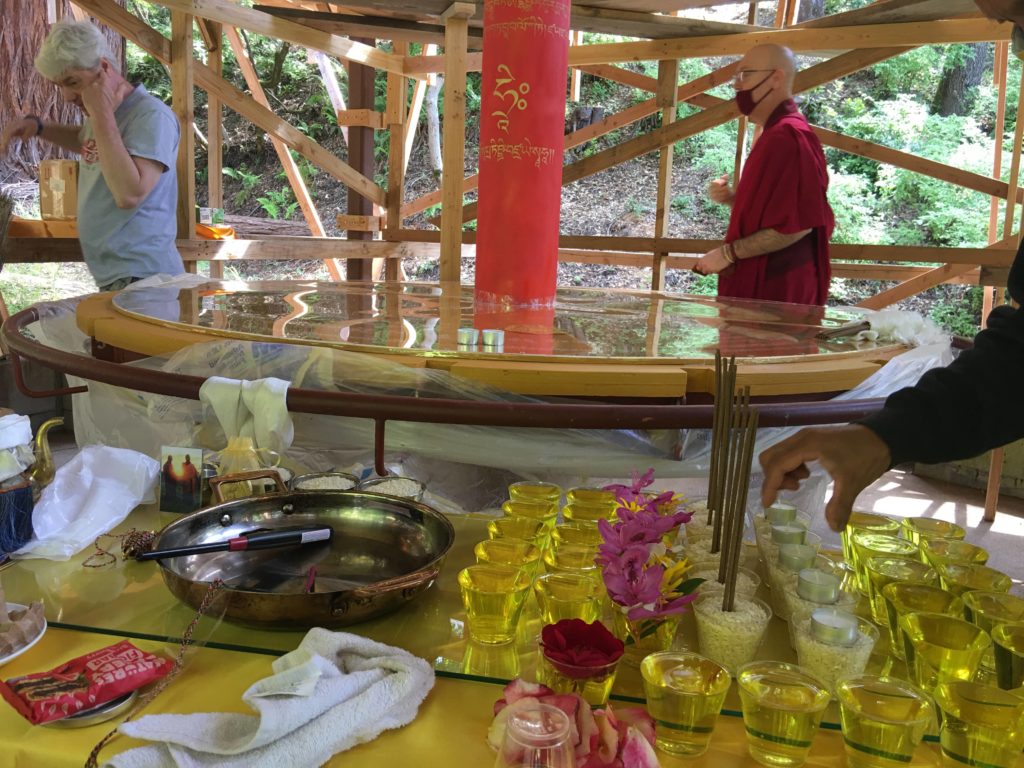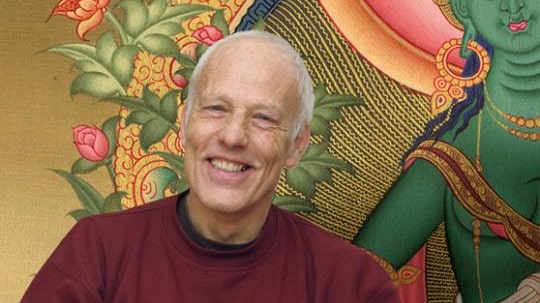
09 Feb From Boy Scout to Buddhist: A Conversation with Rob Preece
In 2016, I had the pleasure of sitting down with Buddhist teacher, author, psychotherapist, and artist, Rob Preece. Since 2012, Rob Preece has led a number of meditation retreats at Vajrapani Institute. Rob will be leading two retreats at Vajrapani Institute in 2019, the first in March, titled Awakening the Compassionate Presence and the second in September, Healing From The Source.
Rob has published six books, and most recent, Preparing for Tantra, The Wisdom of Imperfection: The Challenge of Individuation in Buddhist Life and his most recent, Feeling Wisdom: Working with Emotions using Buddhist Teachings and Western Psychology.
Interviewer: So glad to have an opportunity to talk Dr. Preece. Would you like to start at the beginning?
Rob: One place I could start is when I was 11.
I was a Boy Scout and I used to go on these hikes with friends to received Boy-Scout badges. One hike my friends and I went on was a two-day hike in the countryside. During the hike, we stopped next to a forest and camp there. I was intrigued by the idea of walking into the forest and seeing what I found. I jumped over the fence and eventually found a lake with a Japanese Pagoda. The impact was phenomenal. It brought a kind of goosebumps. I think it was my first taste of another world, a non-conceptual understanding.
So, I got my boy scout badge but, importantly, it woke me up. I think from that point onward, I continue to be fascinated by those kinds of images and particularly Eastern images. It was some years later after exploring Christianity that Buddhism and Carl Jung became a natural reorientation for what I was really looking for.
Interviewer: Which came first Buddhism or Carl Jung?
Rob: I was at university about the age of 20, I went through quite a crisis, a sort of psychological breakdown and identity crisis. I began to find through exploring Jung and Buddhism side by side which helped me reassemble myself after this breakdown. The two emerged at the same time for me.
Kopan Monastery 1972

Jung actually gave me some answers, in terms of my Western psychological spiritual orientation. Buddhism gave me a sense of wholeness, of something about the nature of our totality, our potential. When you’re falling apart, your intrinsic nature is already clear and this Buddha quality is very reassuring. I needed to hear that. This was in 1970 and there wasn’t a lot written on Tibetan Buddhism.
Very soon after that, I started to see where Jung took my attention – it fits well with the Tibetan tradition. Something about Jung’s studies on symbolic reality fit with what the Tibetans had turned into a spiritual tradition. It was a very easy shift when I began to encounter the Tibetans, which, in 1973 was at Kopan Monastery. I felt that I had come home. When Lama Yeshe appeared, so to speak, I felt like I’d arrived where I needed to go.
Interviewer: What was your experience meeting Lama Yeshe and Lama Zopa Rinpoche?
Lama Zopa and Lama Yeshe 1972
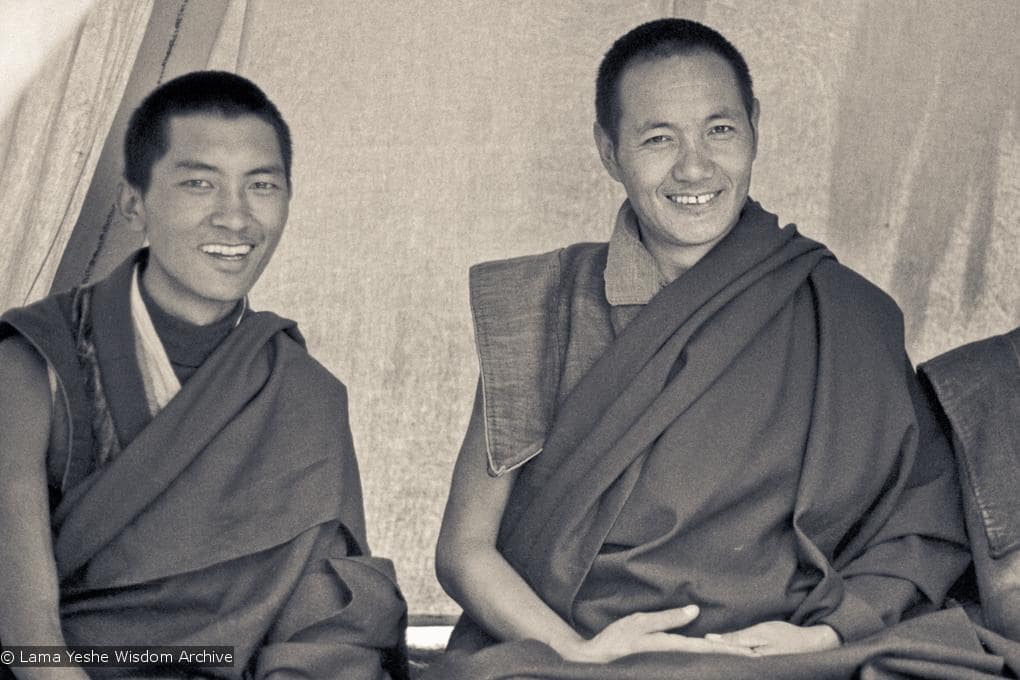
Rob: I was on a hippie trail and seeking something. One thing that had sort of begun to trigger this was that at the time that I was traveling, I was in Canada and I had a vivid dream with brightly colored pictures on the wall. When I went to Kopan Monastery some years later and I saw extraordinary thangkas on the wall I felt it was the dream. That was the hook.
Interviewer: You were caught?
Rob: Like a fish being caught on a hook.
Interviewer: Your artwork is so beautiful, what is the connection between art and the spiritual path for you?
Rob: I’m sure that all of that comes together. Because I was always interested in painting. The kind of painting that I was interested in, the kind of art I was interested in was always symbolic. I knew that I was very connected to my inner life. Carl Jung supported a more creative, dynamic reflection of our inner world and the Tibetan tradition seemed to speak to that from a structured system. I just felt at home with it. I went to Lama Zopa one time and said, “Should I study this?” He said, “No, just paint.”
As I painted, I began to formulate this sense instinctively, a reawakening of sorts. It just felt really natural, really organic, relatively easy, and comfortable.
Then the difficulty started. It wasn’t always comfortable.
Interviewer: What were the difficulties?
Rob: Oh, the difficulties. Where to begin? Embarking on the process of practice and going into retreat, beginning to really work with that internal transformation process is not always an easy one. I suffered with a lot of depression and anxiety when I was younger. When I went into retreat, bang, it all came back. It wasn’t going to just disappear through practice. It was being reawakened on some level for me to transform it. So it wasn’t easy.
You know, long periods of depression through my retreat was a journey into the underworld. The reemergence was sometimes pretty uncomfortable. Lama Yeshe said once, “But sometimes something has to die,” which was sort of reassuring.
Interviewer: Does that experience influence the advice you give to your students?
Rob: I think the bit that was important for me was finding a way to work with and transform my psychological stuff in a healthy way. That’s why I became a psychotherapist really. With my Buddhist practice and my psychotherapy background together, I think it gives a very rich cocktail of ways of working with transformation.
I wish to try to communicate that to the people that I teach, that if we can make these practices really touch our own psychological process, then the transformation is going to be deep. If we don’t, then we could do all sorts of things, which can be exciting and purposeful but we don’t transform something in the core of who we are.
Artwork by Rob Preece
Learn more about Rob and his published work.
